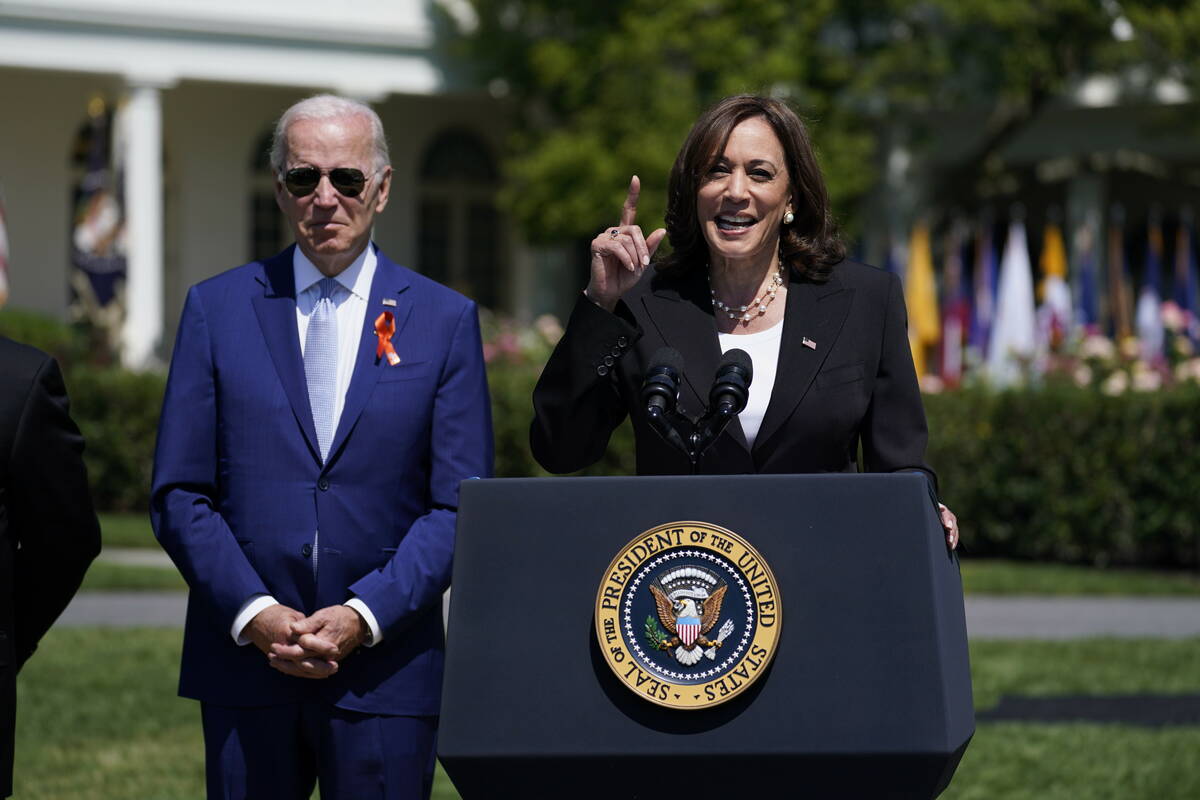White House urges low-income Nevadans to tap into affordable internet program
WASHINGTON – Biden administration officials said Thursday that 144,635 Nevada households have received internet access through an assistance program to help low-income and rural residents connect with education and health care services.
But 300,000 Nevada residents remain eligible for the program, which took effect earlier this year, and Vice President Kamala Harris urged state officials to help accelerate enrollment.
Harris touted the American Connectivity Program during a tour of a community computer laboratory in Charlotte, North Carolina.
The vice president also sent a letter to Nevada Gov. Steve Sisolak seeking “your help to keep that progress going and to ensure all eligible families in Nevada sign up to save.”
Sisolak in May launched “High Speed NV” which uses state and federal funds to close the digital divide in Nevada and provide affordable internet to all state residents by 2029. The federal funds are provided by the bipartisan infrastructure law.
The governor is committed to increasing internet access with the launch of the state initiative and will continue to work with state agencies to make sure Nevadans are aware of the federal program, a spokeswoman said.
Programs to increase internet access were included in the bipartisan Infrastructure Investment and Jobs Act. Information on the American Connectivity Program can be found at GetInternet.gov.
According to federal data, some 303,000 Nevadans eligible for the program have not signed up to take advantage of the program created in the bipartisan infrastructure bill passed by Congress and signed into law earlier this year.
Nevada is one of several states that have entered into data-matching agreements with the federal government for programs that include Medicaid and the Supplemental Nutrition Assistance Program that can be accessed through internet portals.
Increased enrollment in the connectivity program could help residents access other federal services and assistance.
Households of four with an annual income of up to $55,000 are eligible for the program subsidies.
The American Connectivity Program provides eligible households up to $30 per month off their internet bills, or $75 per month for households living on Tribal lands, as well as a one-time $100 discount to purchase a laptop, tablet, or desktop computer.
Sen. Jacky Rosen, D-Nev., was part of the bipartisan Senate working group that crafted the connectivity legislation. She cited the lack of access and affordability of high-speed internet in many communities throughout Nevada in writing the bill.
The entire Nevada congressional delegation supported the bill, and measures to increase broadband access throughout the state.
The lack of access for low-income and rural homes became apparent during the coronavirus pandemic that closed businesses, schools and health care services in Nevada and other states.
When the Clark County School District announced it was shifting to virtual learning during the pandemic, Superintendent Jesus Jara noted that 120,000 pupils, or 27 percent of the CCSD student enrollment for 2019-2020, would be unable to benefit because they lacked a computer or internet access.
Of the 189,473 households with children ages 6-17 in all of Clark County, more than 17 percent did not have a computer and 11 percent lacked internet access, according to The Kenny Guinn Center of Public Priorities, a non-profit, non-partisan think tank affiliated with the University of Nevada, Reno.
Traveling with Harris in North Carolina, Andy Berke, Commerce Department special representative for Broadband, National Telecommunications and Information Administration, cited the need for the connectivity program nationwide.
“We call this internet for all, and we mean it. No one can be left behind,” Berke said.
The Infrastructure Investment and Jobs Act included $65 billion to make high-speed internet available to residents in all states, regardless of geographic location or income.
According to the White House, roughly 1 million eligible families have enrolled in the American Connectivity Program since May. About 13 million have enrolled since the program’s inception.
Contact Gary Martin at gmartin@reviewjournal.com. Follow @garymartindc on Twitter.























